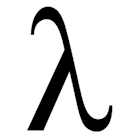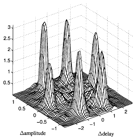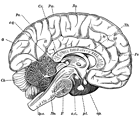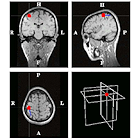Higher-order automatic differentiation | |

|
We are adding exact first-class derivative calculation operators (Automatic Differentiation or AD) to the lambda calculus, and embodying the combination in a production-quality fast system suitable for numeric computing in general, and compositional machine learning methods in particular. The combined expressive power of first-class AD operators and functional programming allows very succinct code for many machine learning algorithms, as well as for some algorithms in computer vision and signal processing. To the programming language community, we seek to contribute a way to make numeric software faster, more robust, and easier to write. To the machine learning community, in addition to the above practical benefits, we seek to contribute a system that embodies compositionality, in that gradient optimisation can be automatically and efficiently performed on systems themselves consisting of many components, even when such components may internally perform optimisation. (Examples of this include, say, optimisation of the rules of a multi-player game to cause the players actions to satisfy some desiderata, where the players themselves optimise their own strategy with using a simple model of the opponent which they optimise according to their opponent's behaviour.) |
Acoustic source separation and localization | |

|
Animals must localize sound sources using a variety of binaural and monaural cues and they must separate sources into distinct auditory streams. The blind source separation problem is to extract several underlying source signals from a given linear combination of these, where the mixing matrix is unknown. This is also known as the "cocktail party problem", referring to a listener trying to follow just one of many conversations simultaneously taking place in a room. The situation is encountered in areas including acoustics, radio, medical signal and image processing, and hyperspectral imaging. We are working on better and more modular and incremental methods to solve the source separation problem, both in the classic (linear square mixing matrix) and in the more difficult (fewer microphones than sources) cases. We also aim to construct efficient algorithms that perform simultaneous source separation and localization. |
Sensory processing and illusions | |

|
Illusions are distortion or misinterpretation of senses. They can be manifested in different modalities including optical, auditory (e.g. phantom sounds), and tactile (e.g. phantom limbs). We are developing models and proposing mechanisms where illusions can be explained as a consequence of optimal inferences in the presence of noise and uncertainty, in contrast with classical explanations invoking regimes where sensory perception breaks down and fails to process the data. |
Functional brain imaging | |

|
We are developing algorithms for the modeling of low-level sensory processing in the human brain and the interpretation of functional brain imaging data, concentrating mainly on magnetoencephalography (MEG). MEG is a non-invasive technique that works by recording magnetic fields generated by electrical currents that occur in the brain due to neuronal activity. Combined high temporal precision and high spatial sensitivity in this method enables observations on human cortical plasticity, rhythmic activity, and variability in sensory processing. Applications in this area include integration of multimodal brain imaging data and brain-computer interfaces. |
